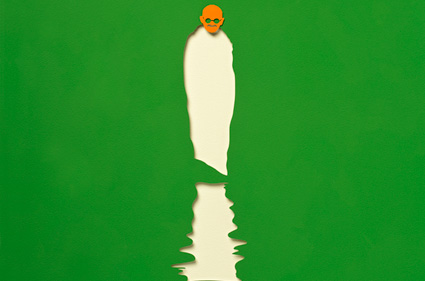
Satyagraha is the third opera of the Philip Glass Trilogy that the State Opera of South Australia has presented this week. Telling the story of Gandhi, it draws inspiration and fragments from the first two Operas. It has the repetitive melody of Einstein on the Beach but is more story based like Akhnaten.
The play is set in three acts – each representing a person important to Ghandi at the time – Leo Tolstoy who was one of Gandhi’s inspirations, Rabindranath Tagore, a renown poet and scholar who Gandhi respected and Martin Luther King, a sort of American Gandhi. The word Satyagraha loosely means “truth force” and was coined by Gandhi in the early 1900s during the struggle in South Africa for rights for Indian nationals.
The entire opera is sung in Sanskrit to add authenticity and although no supertitles were displayed the story was easy to follow. In another bow to authenticity, Glass uses only what he called “international” instruments — instruments that could be found in both America and India. Thus we have the Adelaide Symphony Orchestra with triple woodwinds and a full complement of strings conducted by Timothy Sexton.
The opening of the Opera is lit dramatically in blue (again a motif from the previous Operas). The minimalistic set and costume design by Mary Moore and the lighting designed by Geoff Cobham are sublime. We have a set of steps leading to a huge circle which could be the moon or the sun.
While blue spirits writhe noiselessly on the stage, Adam Goodburn, as Gandhi enters a battlefield. The crescendo of voices and movement takes the audience straight into the conflict. That’s the thing one notices about this opera – the audience are as much a part of the performance – even at one stage having protest leaflets showered down upon them.
After the noise of battle we are in Tolstoy Farm. Gandhi discards his western suit and becomes more simply attired. Simple branched trees and effective lighting represent the symbolic change to a more peaceful place. The concept of civil disobedience as opposed to non-violence is dramatically shown in a later scene where Gandhi’s followers burn their Indian identity papers. The audience can sense the euphoria of that simple act of rebellion.
The Opera is very stylised in both music and stage setting – when Gandhi and his followers are imprisoned; they are sitting in a circle of light while prison bars are slowly lowered in front of them. We have a real feeling of time passing and a feeling that we are participating in an event rather than watching a play on a stage.
In true Philip Glass style, the opera takes on a repetitive feel in the music, which rather than becoming tiresome, adds to the sense of melody and pattern. The simple growth of the orchestration and rhythms leads us on a musical journey.
The State Opera and in particular Timothy Sexton should be very proud of what they have achieved in not only this Opera but the complete trilogy. A truly spectacular presentation worthy of much praise.
————————
The trilogy continues in two more cycles, through to 23rd August. Details and tickets can be found here: http://www.saopera.sa.gov.au/whats-on/philip-glass-trilogy
